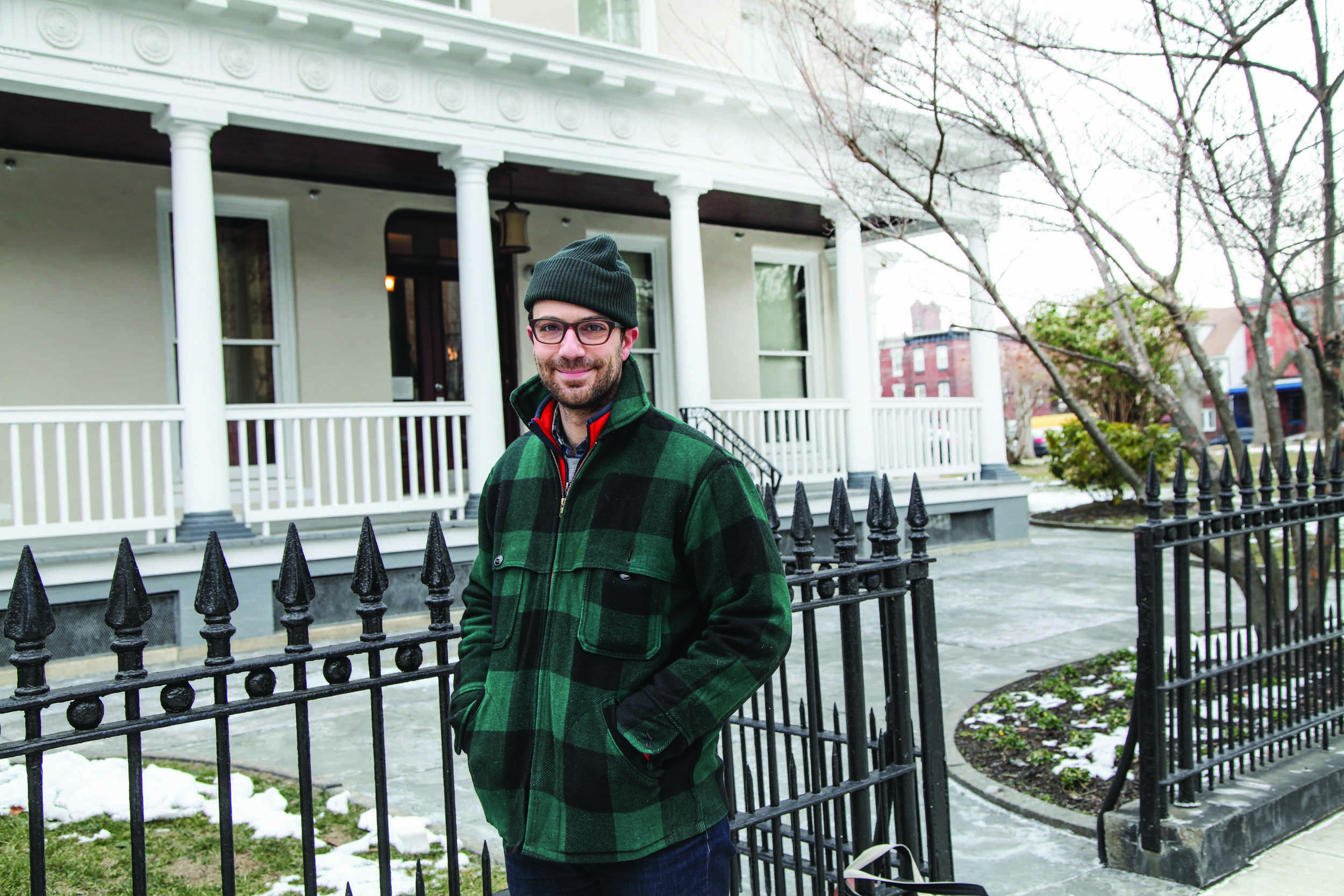Activist scholar documents, and helps defend, West Philadelphia neighborhood
Patrick Grossi stands in front of the Philip B. Lindy House on Drexel University’s campus. Where he works to preserve history and increase political voice.
Patrick Grossi wields an unusual tool to help solve social problems: history.
The 33-year-old doctoral student of Temple University’s History program specializes in what he calls Public History, explaining that it goes beyond the “walls of academia.”
His interest in history led him to one of West Philadelphia’s most hotly contested neighborhoods: Mantua, in West Philadelphia. Grossi has studied the neighborhood’s history, from its beginnings as what he describes as a “speculative real estate venture, a peripheral suburb almost,” in the mid-19th century, to its importance as one of Philadelphia’s predominantly black neighborhoods nearly a century later.
What happens next, he says, still resonates with Mantuans today.
“Longtime residents have a memory of what happened in the 1960s, when all three major universities were orchestrating expansion projects,” Grossi says. “UPenn gets the most heat because they did displace a lot of residents from the Black Bottom neighborhood, where University City is now.”
Grossi is seeing history repeat itself as the footprints of the University of Pennsylvania and Drexel University again expand into surrounding neighborhoods, primarily Mantua. But he’s taking action: In 2013, Grossi served as the project manager for “Funeral for a Home,” a project of Temple Contemporary that publicly eulogized a Mantua rowhome slated for demolition.
Grossi tracked down the history of the house and its past residents, and also collaborated with present-day Mantuans such as De’wayne Drummond, president of the Mantua Civic Association, to speak and read poetry at the funeral.
“Patrick wasn’t like other outsiders or consultants or institutions that come down into a community and force-feed their ideas to people,” Drummond says. “He was going out into the community, going to churches, meeting different people, going to funeral homes, over a year-long process.”
“I don’t now that I’ve ever witnessed a young historian work so energetically and responsibly on a project of such complexity,” says Seth Bruggeman, an Associate Professor of History at Temple University who recommended Grossi to Temple Contemporary. “Patrick [helped] transform “Funeral” from a short-horizon art installation project into a broad-impact critique of urban planning in the last century.”
His dedication to Mantua has led him to volunteer by assisting Rebecca Rose and the Mantua Beautification Committee with a LISC Creative Placemaking Grant (for which he successfully wrote the application); assist the Board of the Mantua Civic Association to help improve its organizational capacity (right now they’re in a media push to discuss “anti-displacement” strategies, which are in development); and more informally, by working with Rev. Dr. Andrew Jenkins to learn how they and neighbors can best leverage and preserve the neighborhood’s history.
Grossi hopes that by continuing to lend his expertise to the activists already trying to preserve Mantua, he can help increase its political voice with the City Planning Commission and other government entities as they continue to update zoning codes and property taxes.
“In a place like Mantua, history can be a tool of empowerment and diplomacy,” Grossi says. “It’s a way to counter some of the forces happening around you.”





Oracle Database has logical as well as physical structure. Logical structure of the database represents table spaces, segments, extents, Oracle blocks whereas Physical structure of the database represents CRD files.